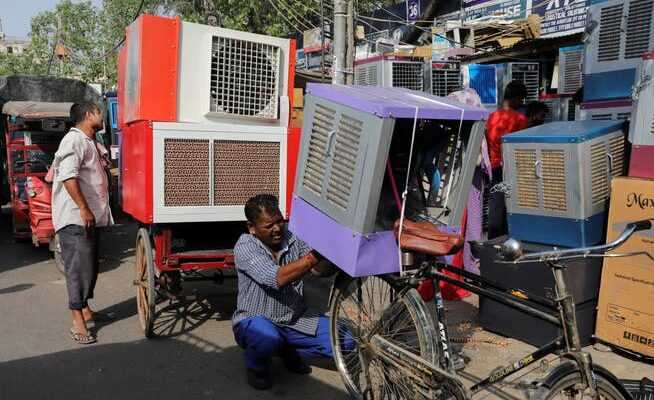Temperatures are currently exceeding 45 degrees in northern India. Electricity and water are becoming scarce.
Air conditioners are very popular in India these days. But they ensure that the power goes out more often.
In the evening the ice cream vendors push their carts on the dark streets of Delhi. They are on their way home, having spent the whole day at the park entrances and markets of India’s capital. These are good days for them: India is currently suffering from a heat wave, with temperatures reaching record highs. In the evening, when the vendors are pushing their carts home, it’s not much colder either.
Temperatures are expected to continue to rise through Sunday. In northern India they are currently exceeding 45 degrees in several places. Last month was the in India hottest March in 122 yearsi.e. since is measured.
Temperatures rise too early
Heat waves are not uncommon in India. They usually come in May and June, just before the monsoon brings some cooling and relief. This time the heat is coming too soon and even concerns Prime Minister Narendra Modi: “Temperatures are rising quickly in the country and they are rising much earlier than usual,” he said at a meeting with ministers. The environmental news portal “Down to Earth” has calculated that 15 states have already suffered from heat wave days since March.
According to Indian definition, a heat wave is when temperatures reach over 40 degrees in the flat plains, over 37 degrees on the coast, over 30 degrees in the mountains and these high temperatures last for several days.
Those who have to work outside in the shade at over 40 degrees under precarious conditions suffer most from the heat. The migrant workers on the construction sites, the delivery boys and housemaids – all those who work behind the scenes in India’s big cities and without whom hardly anything would work.
Indian media are currently publishing tips on how to protect yourself from the heat: wear a hat when working outside, drink even if you are not thirsty. The high temperatures are dangerous. In the state of Maharashtra alone, 21 people died from heat stroke in March. India’s economic metropolis, Mumbai, is in Maharashtra.
The heat is also hitting India’s economy. Those who can afford it currently have the air conditioning at home turned up to the max. More and more Indians are using air conditioning, by 2023 around 10 million units in use. They are power guzzlers. The demand for electricity is increasing accordingly. At the same time, coal reserves are low – India’s most important energy source lacks supplies. The result: several regions in India are currently struggling with power outages.
In western Rajasthan, the demand for electricity has increased increased by 31 percent. The network is unstable. As a result, the power goes out between five and seven hours a day. The governments of Rajasthan, Gujarat and Andhra Pradesh decreed energy-saving measures for factories, they had to stop production.
No relief in sight
It is still unclear what the heat actually means for agriculture. There are first indications that farmers in northern India will lose around half their harvest. According to a report by the India Meteorology Department, it rained less than usual in northern India in March, which is also a reason for the heat wave. The first regions are calling for help, they are running out of water.
There is currently no improvement in the situation in sight. According to the “India Meteorology Department”, the extreme temperatures will continue for the time being, and there should only be relaxation in individual regions in the coming week.
